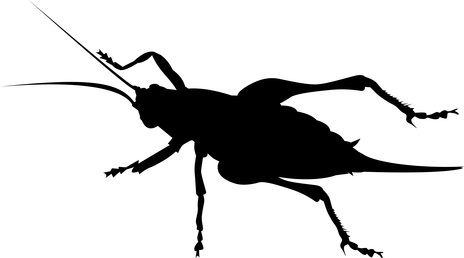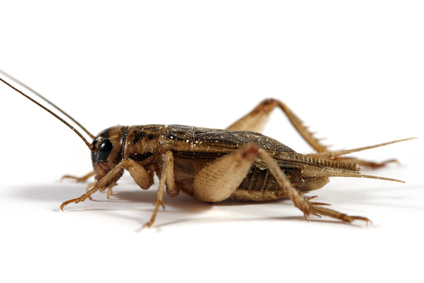Fascinating Facts About Crickets For Savage, MD Residents
What comes to your mind when someone mentions “cricket”? Is it the sound that this insect makes? Or it’s color? Well, did you know that crickets can survive all over the world? Or that they are “allergic” to cold weather? Generally speaking, crickets prefer warmer environments in Howard County. This is why you are likely to find them hiding in your kitchen this summer season.

Perhaps one of the distinguishing characteristics of the cricket is the sound it makes. Moreover, how they chirp and why is quite an amazing discovery.
Crickets chirp by rubbing their two specialized forelimbs together. There are many theories as to why crickets have evolved to stridulate. Some studies suggest that their chirping is entirely for mating purposes since crickets deliberately choose to mate with those unlike themselves in order to expand the gene pool of their offspring.
Another reason for chirping is to celebrate after establishing dominance over another male cricket. These chirps are different from the ones usually emitted by these insects, and they inform the female about the fitness of the male as a partner. Read more at Home Stratosphere…
Additionally, the quality of chirping by a male determines its attractiveness to females. Thereafter, once the mating is complete, eggs go through ten larva stages before adulthood kicks in!

If you think this is strange, there are other peculiar facts about crickets. You won’t believe how people in Oriental countries use them.
In ancient China and Japan, crickets were kept as pets in cages made from bamboo and even gold. Crickets were often kept in the bedroom so their night song could comfort or lull the cricket’s owner to sleep. In Beijing today, crickets are viewed less as pets and more as sporting entertainment. Fighting crickets are raised on a special diet and then deprived of food for a short time before a “cricket match.” Two crickets are introduced into a tiny arena and spectators watch them fight. Some Chinese crickets may be superstars, but most crickets around the world just spend their time breaking down vegetative matter to replenish the soil, and of course, chirping! Read more at Sciencing…
Here, crickets and sports occur in the same sentence. Yet, people are the spectators, not the players. We can only imagine the kind of games the ancient Chinese and Japanese might have come up with for the over 900 cricket species all over the world.

Since we may not have time to discuss all these species, let’s just focus on the most important ones. These are the ones you are likely to encounter on a normal day.
There are two different types of crickets to look out for.
The House Cricket
Their scientific name is Acheta domesticus.
About 3/4 to 1 inch long
Has a light yellowish-brown body with three dark bands on the head and long, pointed wings
Eats almost anything
Will chew on and damage fabrics, paper, rubber, and foodsThe Field Cricket
Their scientific name is Gryllus spp.
1/2 to 3/4 inch long
Has a dark brown to black body with curved wings
Feeds on plants and fabrics
Is attracted to lights at night
Control
A cricket or two in the home will rarely cause damage, but high populations can be of concern because of their tendency to chew. Read more at The Spruce…
You may be one of the rare individuals who enjoy the chirping of crickets. However, it is almost certain that you don’t want any bug chewing your plants or fabrics.
This is where Backyard Bug Patrol comes in. You don’t need to struggle with house and field crickets in your residence. We’ll provide a comprehensive preventative treatment plan for your home. You’ll get the additional benefits of our organic solution that also eliminates other pests. So, call us today!
Related posts:
- Silverfish in Cooksville, MD – Some Interesting Facts You Probably Didn’t Know
- Why Residents of Jessup, MD Should Be Extra-Vigilant About Mosquitoes
- Mysterious Mice: What Makes Them A Nuisance To West Friendship, MD Residents
- Excited About Going Outdoors In Ellicott City, MD? Ticks Are Excited Too!
- Woodstock, MD: Encouraging Developments In The Fight Against Mosquito-Borne Dengue
